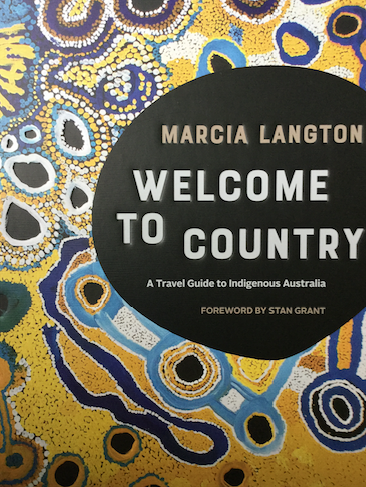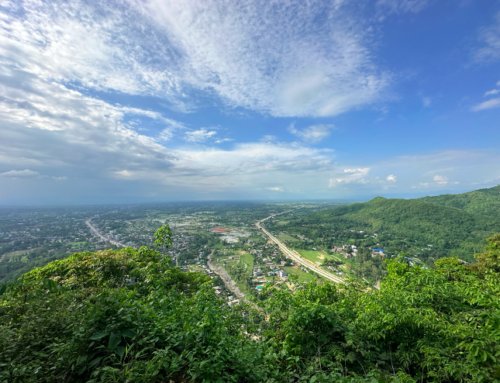Summer is a good time for academics. Research, reading, and writing—whether at home or in the field or both, summer is often when we catch up on things we’ve been meaning to do. Some summers one of these activities is prioritized over the others. Other times we are doing all three. This summer, we’ve decided to launch a new feature sharing what “we” are reading. Who constitutes the we of the post will change with each version, but for the first installment, we’ve polled members of the AES Board and graduate student Editorial Intern Team. What are they reading this summer? Widely, it turns out—from fiction and travel books, to ethnographies and political manuscripts, and more. It’s probably a rare academic who reads a single book or article at a time, and we are always on the lookout for new things to read and teach for work and for fun.
Without further ado, and with thanks to the six scholars who shared their readings—Gina Athena Ulysse, Carole McGranahan, Brittany Birberick, Chris Loperena, Alize Arican, and Marc Edelman—here’s What We’re Reading:

Gina Athena Ulysse, Councilor: This summer as I prepare for an art project next year in Australia, my reading revolves around that for inspiration. Here are some works that have my attention. In addition to her academic articles, anthropologist Marcia Langton‘s Welcome to Country A Travel Guide to Indigenous Australia is introducing me to various aspects of indigenous cultures. Her co-authors are Nina Fitzgerald and Amba Rose Atkinson. This gem goes way beyond local customs and tourist experiences to offer a directory that includes festivals, arts and performances, tours, etc. Most importantly, it takes a candid approach to Australia’s past and addresses tough questions about silences including what if your guide is not indigenous and is whitewashing the history. I have a treasured first edition of the pan-African journal Presence Africaines, vol 12 from 1951. It’s a special issue on Haiti that contains ethnographic essays, poetry and photographs by Suzanne Comhaire-Sylvain, Michel Leiris, Alfred Metraux, Langston Hughes, Leopold Senghor and so many others. Comhaire-Sylvain was the first Haitian woman anthropologist who was not only a student of Malinowski, but also worked with Alfred Metraux in the 1940s. Despite its fragile condition, that’s been really fun to thumb through as a few of the writers are also present in Tim Watson’s Culture Writing: Literature and Anthropology in the Midcentury Atlantic World, which I am finally reading. This is a beautifully written critical account of the kinship between these two disciplines that locates the “literary turn” earlier than Writing Culture. I am also revisiting anything by Andre Breton on surrealism because the book project I am working on is a Rasanblaj manifesto. I decided to stop treating my exhibition catalogues like coffee table books and read them from cover to cover. So next up are Frida Kahlo: Making Herself Up from the Victoria and Albert Museum and the Brooklyn Museum, and Charles White: A Retrospective at MoMA. These exhibitions awakened my muses and were fuel to the verve. So many confluences between art and anthropology.
Carole McGranahan, Digital Content Editor: Right now I’m immersed in Alpa Shah’s new book Nightmarch: Among India’s Revolutionary Guerillas. I’ll be teaching it this fall in my grad seminar so am pre-reading it this summer. It’s a deeply compelling ethnography of the Naxalite movement, of war and revolution, and of class and gender and caste. It is insightful, beautifully written, and uncompromising. Like many (most? all?) academics, I always have more than one book going at a time, so I’m also reading This Accident of Being Lost by Leanne Betasamosake Simpson. It’s a book that slays you with content, sentiment, and language, and that cuts across multiple genres. Parts of it remind me of Tsering Wangmo Dhompa’s Coming Home to Tibet: A Memoir of Love, Loss, and Belonging in the gorgeous, lush precision of prose when in the hands of poets. Intimidating and inspiring all around. Some books I read slowly. Two on my nightstand that I’ve been savoring for several months and am not yet done with are Karmamudra: The Yoga of Bliss (Sexuality in Tibetan Medicine and Buddhism) by Dr. Nida Chenagtsang, translated by Ben Joffe, an anthropology PhD candidate at the University of Colorado, and in an entirely different vein, Jhumpa Lahiri’s edited volume The Penguin Book of Italian Short Stories. Other books I have to read fast, such as Maria Puig de la Bellacasa’s Matters of Care: Speculative Ethics in More Than Human Worlds which I am overdue in reading for an online summer book group. Finally, following conversations about anthropology and fiction with colleagues at a recent conference in Århus, I’ve decided to read as much anthropologist-written fiction as I can this summer. My eleven-year-old daughter and I recently read (and loved) Ruth Behar’s Lucky Broken Girl, and I just finished Camilla Gibb’s Sweetness in the Belly. Next up is The Sultan’s Seal by Jenny White, and a return to Toni Morrison’s distinction between truth and fiction—truth is random, and fiction is not—and to the idea that anthropology not only can be, but perhaps always is, both.
Brittany Birberick, AES Editorial Intern: I’m in the midst of writing my dissertation, so a lot of my reading has felt very rushed lately. I want to share a few texts that I’m reading slowly. When I’m writing, I usually turn to poetry when I need to clear my head. The pacing, even the way the words look on the page, forces me to pay attention differently. I just finished Sara Uribe’s Antigona Gonzalez. Uribe is a Mexican poet who tells a contemporary version of Antigone set in Tamaulipas, Mexico, which has one of the highest reported cases of disappearances in Mexico. The book is a montage of prose, lines of poetry, newspaper articles, and different iterations of the Antigone story told by different Latin American authors. I also like returning to Anne Carson’s collection of poetry and essays, Plainwater, when I feel stuck. On the academic front, I’m two chapters in to None Like Us: Blackness, Belonging, Aesthetic Life by Stephen Best. The book rethinks what he calls the “melancholy historicism” of the black experience and identity. In just the first chapter he offers an elegant analysis of movement and temporality by reading how one looks at the sculptures of the Ghanaian artist El Anatsui. I recommend “reading” these sculptures too. They are breathtaking at first glance and then they draw you near as you try to figure out exactly what you’re looking at. I’m also closely reading Louise Meintjes’ Dust of the Zulu: Ngoma Aesthetics after Apartheid. Beautifully written, the ethnography explores ngoma, a competitive form of dance performed by groups of Zulu men in South Africa. The text, like Best’s, captures something visceral about movement, but for Meintjes it’s the graceful yet fierce movements of the male dancers as they collectively navigate performances and the material demands of contemporary South Africa. I’ve also been lucky enough to read a part of Sharad Chari’s manuscript for his forthcoming book Apartheid Remains, and I can’t wait to read the whole thing.
Chris Loperena, Secretary: The book that has most captured my attention this summer is Amitav Ghosh’s The Great Derangement: Climate Change and the Unthinkable. It’s a powerful work of non-fiction that explores the impact of climate change on history, politics and the literary imagination more broadly. Ghosh presses his readers to grapple with the epochal shift we are facing and the urgent need to rethink the public-politics of climate change. His writing on these topics is not only compelling, but also expansive, as he weaves together literary analysis with critical social theory and emergent thinking on the Anthropocene, leading him to ponder how our growing awareness of non-human actors unsettles established notions of history and agency. These are big questions that require new paradigms. I’m also reading The Savage Detectives, a magnificent tome by Chilean author Roberto Bolaño. The first section of the novel centers on the adventures of an aspiring poet in Mexico City who, during his first year of college, gets caught up in a budding literary movement–the visceral realists(!). Bolaño’s poetic and unconventional approach to storytelling explores themes of class, sexuality and teenage drama. I don’t watch television, so a juicy work of fiction is a must. Aside from these two books, I’m starting to prep for my fall graduate seminar, which will examine the theoretical literature on race and space, and their co-articulation under conditions of racial capitalism. First on my list is Macarena Gómez-Barris’ The Extractive Zone: Social Ecologies and Decolonial Perspectives. I’ve only made it through the introduction, but it’s already inspiring new thinking of relevance to my research on race and extractivism in Honduras.
Alize Arican, AES Editorial Intern: This has been a summer of moving across multiple states (long story), and so I’ve been reading a few books that I had already picked out from my “summer reading” box I’ve been carrying around. One of these is Sylvia Wynter: On Being Human as Praxis, edited by Katherine McKittrick. I first read this book around two years ago, but each time I revisit it, I learn more and more about care as a crucial praxis encompassing many (nonhuman) publics. Sylvia Wynter’s writings were very helpful to foreground the dissertation chapter I’ve been working on, and so was AbdouMaliq Simone’s Improvised Lives: Rhythms of Endurance in an Urban South. I’ve long been compelled by Simone’s broad theorization of improvisation as a significant mode of livelihood in itself, rather than a byproduct of exclusion. In this book, he beautifully brings notions of care and futurity into conversation with improvisation. Rebecca Bryant and Daniel Knight’s The Anthropology of the Future was a great accompanying piece with incisive chapters on anticipation and hope—definitely recommended! In the meantime, I read an amazing novel with important insights into Nigerian politics: Welcome to Lagos, by Chibundu Onuzo. The book came out while Onuzo was working on her Ph.D. in history at King’s College London, and it is both inspiring and encouraging to see graduate students with impressive skills in different genres! Next up in my box of books are two works I acquired a while ago but didn’t get a chance to read: Marco DiNunzio’s The Act of Living: Street Life, Marginality, and Development in Urban Ethiopia, from which I expect to learn a great deal more about “hustling” as livelihood; and Nikolai Ssarin-Chaikov’s Two Lenins: A Brief Anthropology of Time, a book a dear friend recommended to me because of my interest in temporality. And, as the movement to free Turkey’s political prisoners gains more and more momentum, I plan to read Devran, a new collection of stories penned in prison by Selahattin Demirtaş (a prominent leftist pro-Kurdish figure in Turkish politics), who is still behind bars. I recommend his first volume, Seher (translated into English as Dawn) as well.
Marc Edelman, President: The New York Times Book Review has a stock question that it always asks in its “By the Book” interviews with authors: “What books are on your nightstand?” I don’t have a lot of books on my nightstand, because as an academic I’m often too damn tired to do any sustained reading there and it’s hard to take digital notes in bed. My desks at home and at work, however, are piled high. Lately I’ve been reading a lot to try to understand our current predicament — you can call it authoritarian populism, authoritarian neoliberalism, illiberal democracy, or whatever you prefer. Federico Finchelstein’s From Fascism to Populism in History unpacks the genealogies of fascism and populism in thoroughly original ways, drawing heavily on South American and European cases. After years of research in and around international development institutions, I’ve become fascinated and exasperated by the prevalence of ideologically laden buzzwords. Patrick Leary’s Keywords – The New Language of Capitalism has revealing entries on some of my favorites, such as “stakeholder,” “resilience” and “curate,” although it leaves out some other obvious candidates (“participation,” “consultation” and “transparency”). To prepare for an upcoming course on grassroots movements and social change, I’ve been ploughing through Asad Haider’s Mistaken Identity: Race and Class in the Age of Trump and Jane McAlevey’s No Shortcuts: Organizing for Power in the New Gilded Age. I wish I could spend more time with each and I wish I were more confident that undergraduates would also spend time with them. In the summer I like to read one or two big fat books just for fun. Two are staring at me now, bindings as yet uncracked: Mary Gabriel’s Ninth Street Women, which is about five well-known painters in the time and neighborhood where I grew up (I don’t remember any of them, though my parents moved in the same circles); and Carlos Ruiz Zafón’s El juego del ángel, the second in a series which has as one of its main characters “the Cemetery of Forgotten Books,” a place that is both an object of fascination and fear for me and probably other academic writers. Finally, I’m reading two books to my youngest son, both of which happen to be about kids going on quests: volume four of the Percy Jackson and the Olympians series by Rick Riordan, which has the improbable premise that the gods of classical Greek mythology are still alive and raising hell on Long Island; and La palabra más hermosa by Jordi Sierra i Fabra, where a sister and brother are detective-lexicographers who rush against a deadline imposed by an eccentric professor to identify “the most beautiful word” and pass through “the theme park of words,” “the store of words” and various similar locations. It is only now, in writing this reflection, that I realize that Sierra i Fabra, like Ruiz Zafón, is Catalan, and that their stories are weirdly parallel in their shared obsession with words in places.




